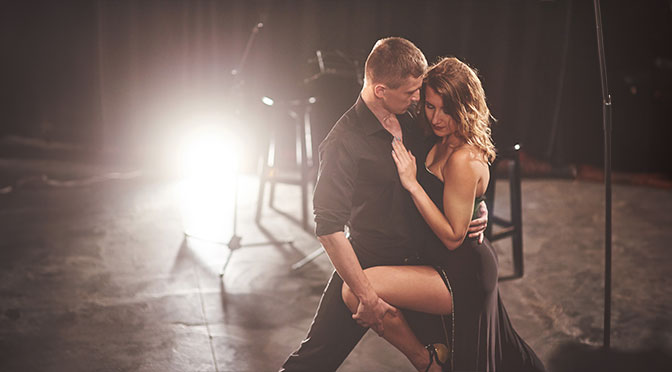If you are an erotic writer, you know that every story, any story that tells of the encounter between two people, is inherently erotic since it tries to make the tension and attraction between them tangible.. One of the most challenging aspects of writing erotica is crafting a narrative that consistently evokes a sense of longing, love, intimacy, and sexuality without losing sight of the story’s plot and characters. This process, known as the ‘erotic staging,’ is an essential technique that separates great erotica from mediocre smut.
In this blog post, we will explore the art of erotic storytelling and how to master erotic staging. We’ll discuss practical tips and strategies to help you create stories that captivate your readers and evoke intense passion and desire. Whether you are a beginner or an experienced erotic writer, this post will help you take your writing to the next level.
Understand the Power of Sensory Details
One of the most effective ways to convey eroticism is by leveraging sensory details. By tapping into sights, sounds, tastes, textures, and smells, you can fully immerse your readers in the experience and ignite their senses. For example, if you describe a scene where two lovers are kissing, instead of simply stating, ‘they kissed,’ focus on the moment’s sensations. What do their lips feel like? Is their breath warm and moist? What does their saliva taste like? How does their embrace feel against their skin? By asking these questions, you can create vivid, engaging, and erotic descriptions that resonate with your readers.
Show, Don’t Tell
The “Show, don’t tell” writing advice especially applies to erotic storytelling. Instead of simply describing sexual acts clinically or crudely, focus on the emotions that accompany these moments. What are the characters feeling while they’re engaging in these activities? Are they hesitant, eager, or doubtful? How do these experiences change their relationship dynamic? By showing the emotional landscape of erotic situations instead of just describing what happens physically, you can create a nuanced, complex, and engaging story with added depth and complexity.
Study the Classics
Reading classic erotic works like Anaïs Nin’s “Delta of Venus,” Henry Miller’s “Tropic of Cancer,” or Marquis de Sade’s “Justine” can be a master class in erotic staging. These works demonstrate how eroticism can be seamlessly integrated into a plot while elevating the language to a level that elicits strong emotions. By studying and taking inspiration from these works, you can learn new techniques and insights to enhance your writing skills and make your stories more engaging and powerful.
Leave Something to the Imagination
Erotic storytelling is about seduction, and a crucial element of seduction is leaving something to the imagination. While it may be tempting to describe every detail of a sexual encounter, sometimes, a more subtle approach can be more effective. Leaving unresolved sexual tension between the characters or allowing them to engage in off-page intimacy can work wonders for building anticipation and heightening the eroticism in your story. Remember, the reader’s imagination is your most powerful tool – use it to your advantage.
Experiment with movie scenes
To learn to write sensually, it can be an excellent exercise to turn movie scenes that you find erotic into literary scenes and work on them until the feeling you had while watching is conveyed when reading. What do I see? What thoughts will the protagonists have in this situation? What creates the tension?
Transforming movie scenes into literary scenes requires conscious attention to the details and emotions present in the original scene. Here are some steps and considerations that can help you:
- Observe the scene: Watch the movie scene carefully and note the details. Pay attention to visual elements such as light, colors, movements and gestures. Also, pay attention to the surroundings and atmosphere.
- Emotional resonance: Analyze what emotions the scene triggers in you. Is it passion, tension, desire or something else? Try to understand these emotions and put them into words.
- Protagonist perspective: Imagine you are one of the protagonists in the scene. What do you see from your perspective? What thoughts are going through your head? Describe not only the external actions, but also the inner feelings and reflections.
- Dialog and non-verbal communication: Pay attention to the dialog and non-verbal communication in the film scene. Edit them to reflect the desired sensual atmosphere. Emphasize subtle cues and nuances in the language.
- Tension building: Identify how tension is built in the movie scene. Is it slow movements, intense looks or unexpected twists? Transfer these elements into your written scene to create a similar tension.
- Sensory description: Use rich and sensual language to capture the scene’s atmosphere. Describe smells, textures, temperatures, and other sensory details to draw readers deeper into the scene.
- Revision: Revise your written scene several times to ensure it achieves the desired sensory impact. Refine the language, add details and check that the emotions are conveyed well.
- Get feedback: Share your written scene with others and ask for feedback. Ask if the sensory atmosphere is conveyed and if there are areas that can be improved.
This exercise can help you practice sensory writing and strengthen your skills in observation, emotion transfer and tension building. It’s essential to be open to experimenting and trying different techniques to develop your style.
Mastering the art of erotic staging is a process that requires skill, patience, and practice. You can create stories that evoke intense feelings of desire, passion, and love by using sensory details, showing emotions instead of just telling, studying the classics, experimenting with different genres, and leaving something to the imagination. Remember, a good erotica story shouldn’t just be about sex – it should resonate on an emotional level and make the reader feel something. So, keep these tips in mind and keep writing!

